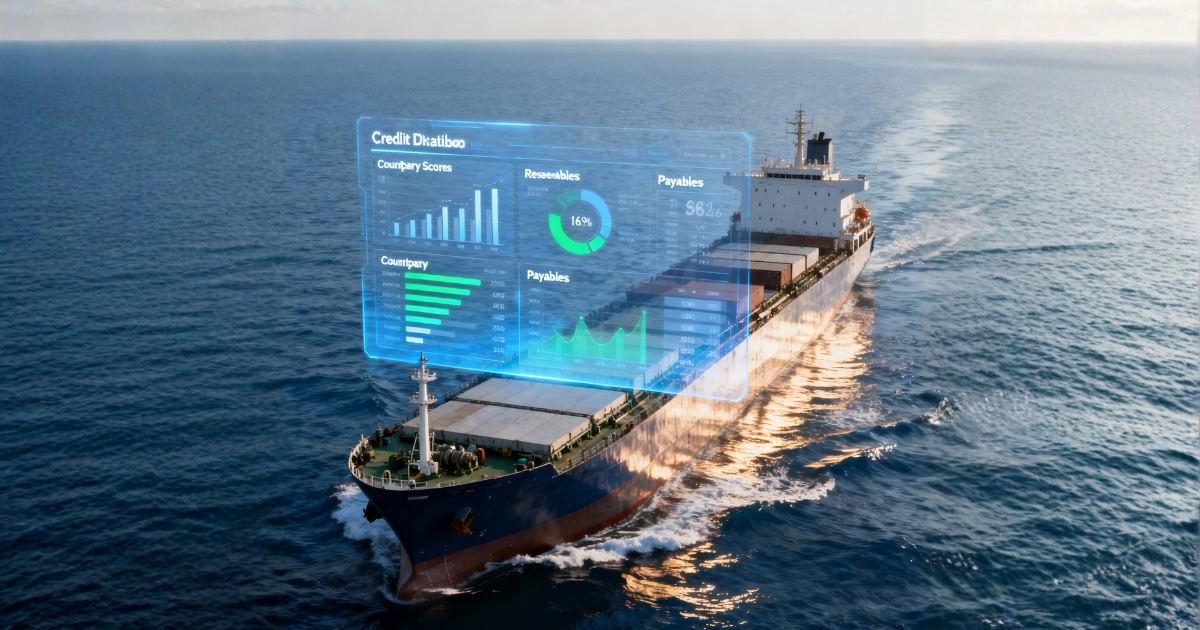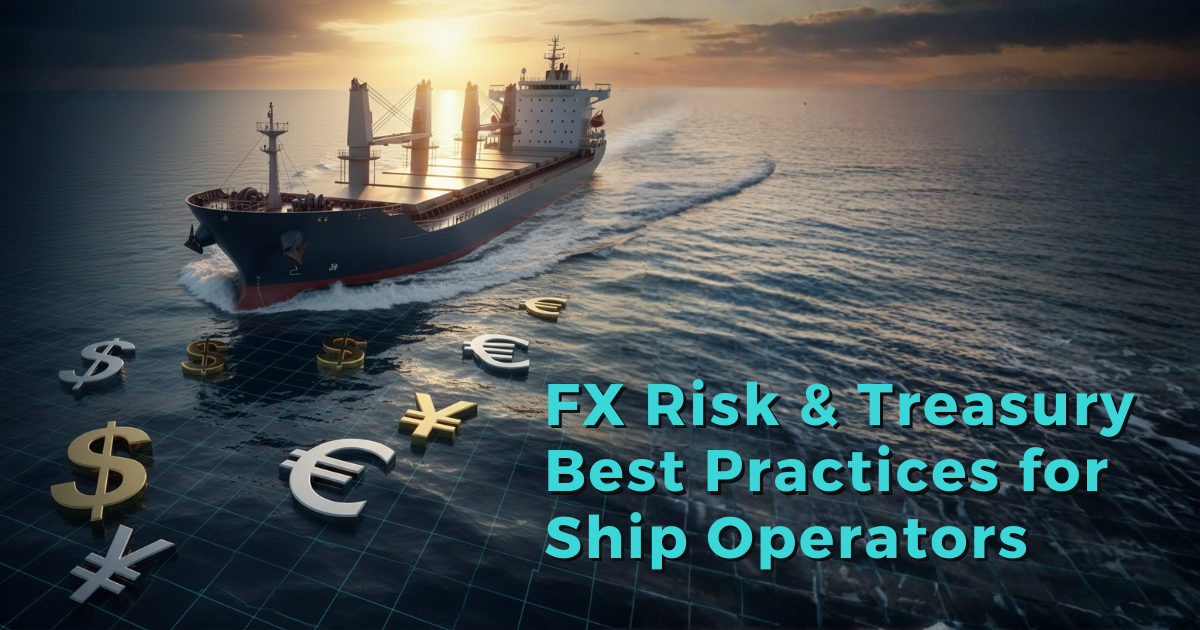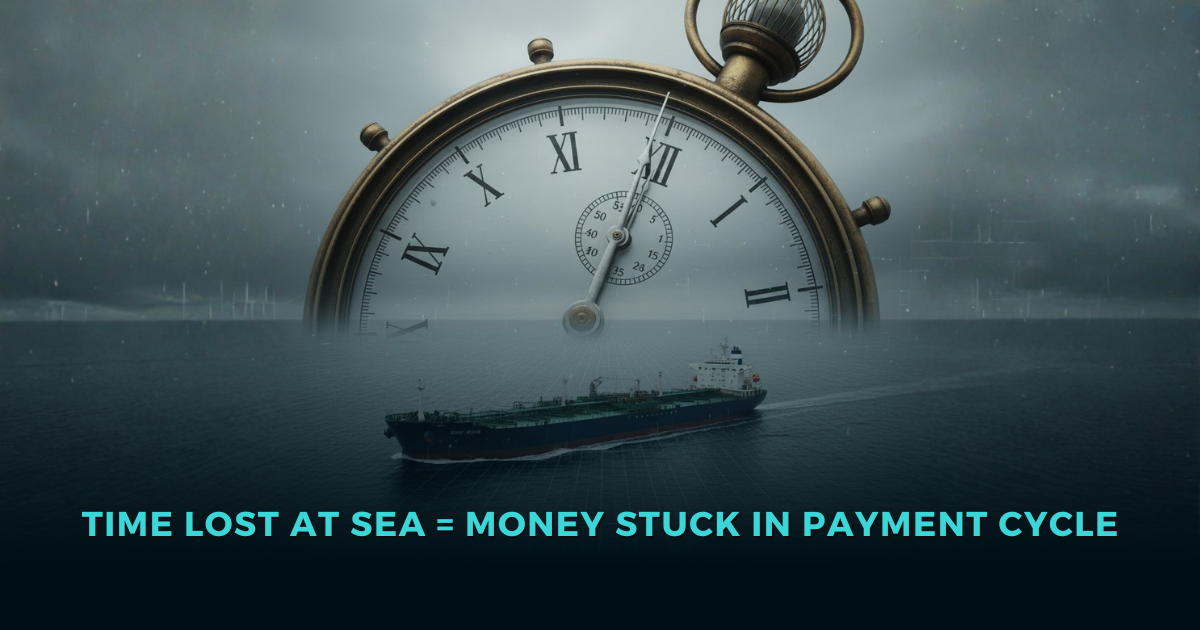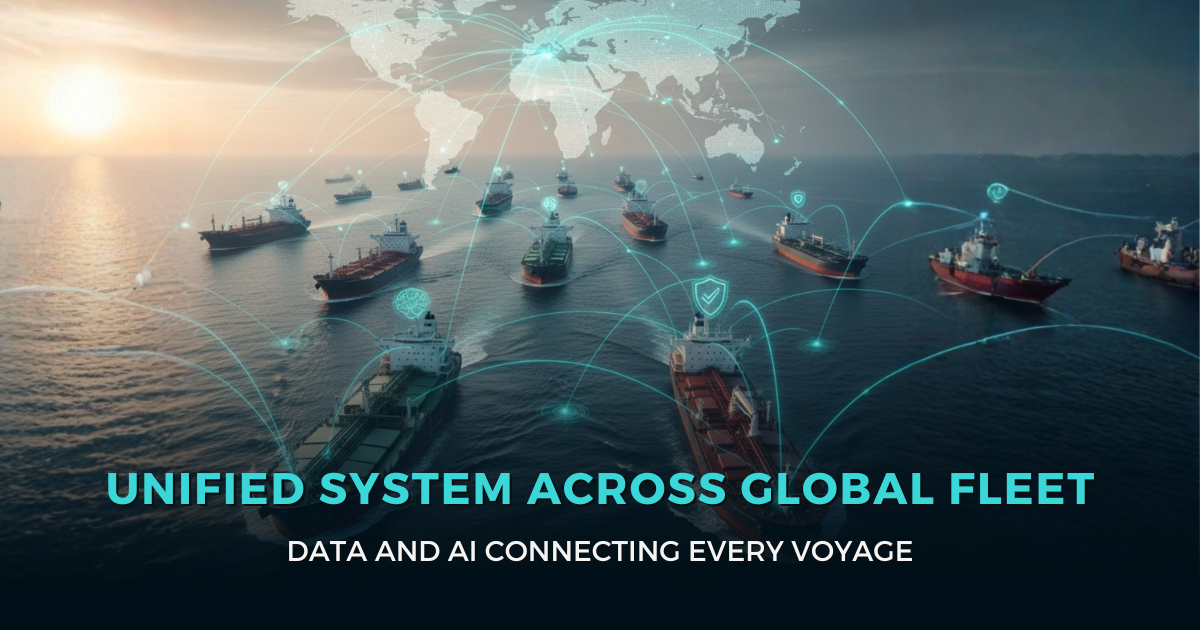FX Risk & Treasury Best Practices for Ship Operators
1. Understand your exposures (don’t guess) Start by mapping where currency risk actually appears across the voyage lifecycle: Freight receipts:...
Solutions Aligned with Maritime Roles
Model-Specific Business Solutions
Streamlined data insights
Optimized maritime voyage planning
Enhanced financial stability
Maritime-focused business banking
Access legal documents and policies.
Get solutions to all your questions.

In shipping, every fixture, charter, and voyage involves risk. Not just operational or weather risk—but financial and credit risk. A shipowner or charterer’s ability to pay, perform, or deliver can make or break a voyage’s profitability.
Yet, despite its importance, credit risk is often hidden, fragmented, and opaque. Banks, counterparties, and even internal teams struggle to gain a consolidated view of a company’s financial health. In an industry where millions of dollars can change hands in a single voyage, this lack of transparency is a serious vulnerability.
Today, financial visibility and credit transparency are not optional—they are strategic imperatives. Companies that embrace transparency gain trust, negotiate better terms, and mitigate risk.
This article explores the credit score of shipping, why transparency matters, and how tools like Marlo analytics are reshaping maritime finance.
Shipping credit risk is the risk that a counterparty will fail to fulfill its financial obligations. It includes:
Charterers failing to pay freight or hire on time
Brokers defaulting on commissions
Suppliers or agents delaying payments
Financial institutions not honoring letters of credit
Unlike consumer credit, maritime credit risk is high-stakes and multi-layered, often involving multiple jurisdictions, currencies, and regulations.
Key drivers include:
Financial health of the counterparty (balance sheets, cash reserves, debt levels)
Market volatility affecting freight rates and cash flow
Operational performance: delays, off-hire periods, or vessel unavailability
Geopolitical exposure: sanctions, trade restrictions, or regional instability
Even experienced operators sometimes underestimate the impact of these factors on overall voyage profitability.
Without proper credit insight, companies risk:
Overexposure to a single counterparty
Delayed payments and extended DSO (Days Sales Outstanding)
Unexpected write-offs or disputes
Defaults or delayed payments are publicly known in the maritime community. An opaque credit profile can limit access to financing, brokers, and charterers.
Companies that cannot quickly assess counterparty risk may miss profitable fixtures or enter overly conservative contracts, reducing competitive edge.
Similar to personal or corporate credit scores in banking, a shipping credit score quantifies financial reliability. It evaluates:
Payment history
Outstanding liabilities
Market exposure
Compliance and sanction risks
A high score signals financial strength and trustworthiness, while a low score triggers caution in counterparties.
Faster decision-making: Quickly assess counterparty risk before fixture negotiation
Better financing options: Banks and lenders prefer transparent, high-scoring companies
Improved commercial terms: High-scoring companies can negotiate lower deposits or favorable hire rates
Transparency isn’t just about one company—it’s about sharing reliable, verifiable data across brokers, charterers, and banks. Key elements include:
Real-time receivables and payables tracking
Voyage-linked financial performance
Sanctions compliance reporting
Historical payment behavior
When transparency exists, counterparties can trust the numbers, not just the reputation.
Financial visibility improves when credit assessment is integrated with operations:
Delays or off-hire events automatically update risk profiles
Invoices linked to fixtures and voyages improve auditability
Cashflow projections reflect real-time operational performance
This integration reduces blind spots and prevents overexposure.
Platforms like Marlo provide real-time maritime financial intelligence. Features include:
Counterparty credit scoring based on historical and real-time data
Dashboard visualization of receivables, payables, and exposure
Automated alerts for overdue payments or sanction risk
Integration with chartering and voyage management
Quickly identify high-risk counterparties before committing to fixtures
Optimize working capital by prioritizing high-credit-score clients
Enhance negotiation leverage with banks and brokers
Reduce the risk of defaults impacting voyage P&L
Analytics enables scenario analysis:
What happens if a counterparty delays payment by 30 days?
How does exposure to multiple charterers affect fleet cashflow?
What is the aggregate credit risk for the entire company or fleet?
By quantifying these risks, decision-makers move from intuition-based to data-driven maritime finance management.
When companies provide verified credit and operational data, they gain:
Trust from charterers and brokers
Favorable contract terms
Priority in securing cargoes and financing
A transparent credit approach benefits both sides: the counterparty reduces risk, and the company gains a reputation as reliable.
Standardize financial reporting across voyages
Maintain an updated and auditable credit database
Share verified insights selectively with partners
Integrate credit risk management into corporate governance
Transparency isn’t just a compliance exercise—it’s a commercial advantage.
In the next decade, companies that embrace credit visibility and analytics will outperform those that rely on reputation alone:
Credit scores will become benchmarks in chartering decisions
Integrated finance platforms will allow real-time exposure tracking
Banks and insurers will favor partners who provide auditable, transparent data
Shipping is moving from a relationship-driven market to a data-driven market. Companies that leverage analytics to quantify credit risk will gain speed, agility, and financial resilience.
In maritime finance, trust is built on transparency, not assumptions. Credit risk is no longer hidden—it is measurable, analyzable, and manageable.
By integrating:
Operational data (voyages, off-hire, cargo performance)
Financial data (receivables, payables, hedges)
Counterparty analytics (credit scores, historical payments, sanctions risk)
Shipping companies can reduce exposure, improve P&L, and negotiate confidently.
The takeaway is clear: in a volatile and high-stakes industry, transparency is not optional—it is a strategic differentiator. Those who embrace it will lead; those who don’t will struggle to keep pace.

1. Understand your exposures (don’t guess) Start by mapping where currency risk actually appears across the voyage lifecycle: Freight receipts:...

Summary In recent maritime logistics literature, payment delays across freight, shipping, and related supply chain services have been found to...

The maritime sector is entering a new software era. As regulatory pressure grows, data volumes explode, and commercial margins stay thin, shipowners...